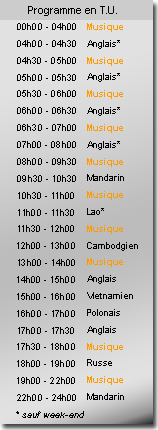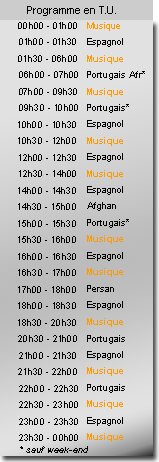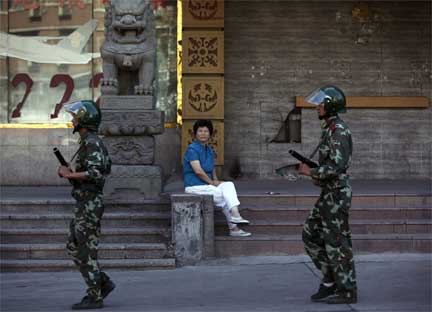China/Xinjiang - eyewitness report
Chinese police maintain presence in Xinjiang, calm returns to Urumqi
Article published on the 2009-07-09 Latest update 2009-07-09 10:13 TU
“I saw a still strong police and paramilitary presence, but the big barricades were removed, and the intersections were not blocked like on Wednesday,” described RFI’s Marc Lebeaupin, who was in the mosque neighbourhood of Urumqi Thursday morning.
“The population was back,” he added. “Shop stalls, souvenir stores and small restaurants reopened their doors Thursday morning.”
Although the city has regained a sense of normality, people were still on edge as security forces stay to keep the two populations from clashing again.
Official figures say 156 people died in violence since Sunday, though exiled Uighur groups say that the number is higher.
Late Wednesday the mayor of Urumqi, Jerla Isamudin, said both the Han Chinese and the Uighurs had committed violent acts, but that most people had refrained from takin part and the situation was under control.
Thousands of Han Chinese took to the streets vigilante-style Wednesday, bringing makeshift weapons to fight Uighurs after a protest against discrimination over the weekend exploded into violence.
In an unprecedented move, Chinese President Hu Jintao left the G8 summit in Italy Wednesday to return home to deal with the crisis in Xinjiang. But neither he, nor anyone else from the Beijing government, has commented publicly on the situation.
An ethnic Uighur economics professor in Beijing, Ilham Tohti, was arrested Thursday after he posted reports of the riots on his blog, Uighur Online, according to the media watchdog Reporters Without Borders (RSF).
The Public Security Bureau would not confirm the arrest.
The blog was named on national television as an outlet used to organise Sunday’s protests. Tohti, who teaches at Minzu University of China, has been pressured by authorities in the past to stop posting, according to RSF.
| On France 24 TV China protests – The ethnic divide between Uighurs and Han |
China - Xinjiang violence
Exiled Uighur leader claims police killed 400 in Urumqi
2009-07-08 10:59 TU









